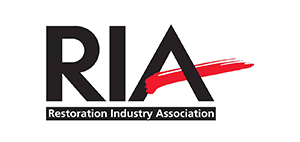Mold is a common problem that can affect any home or building. It can cause health issues and damage property if not addressed promptly. When it comes to dealing with mold, two terms that are often used interchangeably are mold removal and mold remediation. However, there is a significant difference between the two.
Mold removal is the physical removal of mold from a surface, while mold remediation involves identifying and addressing the underlying cause of the mold growth to prevent it from returning. Mold remediation also includes the removal of any contaminated materials and the use of specialized equipment to clean and sanitize the affected area. Understanding the difference between mold removal and mold remediation is crucial to ensure that the problem is adequately addressed and does not recur.
Understanding Mold in Northwest Arkansas
Mold is a type of fungus that grows in damp and humid environments. It can grow on any organic material, such as wood, paper, fabric, and even food. Mold spreads by releasing tiny spores into the air, which can then settle on other surfaces and grow into new colonies.
Mold growth is usually caused by excess moisture in the environment. This can be due to a variety of factors, such as leaks, flooding, high humidity levels, or poor ventilation. If left unchecked, mold can quickly spread and cause a serious mold infestation.
Mold levels can be measured by a professional using specialized equipment. Mold levels are typically higher in areas with high humidity or moisture, such as bathrooms, kitchens, and basements. If mold levels are found to be above normal, it is important to take action to prevent further mold growth.
Mold infestation can be a serious health hazard, especially if the mold produces mycotoxins. Mycotoxins are toxic substances that can cause a range of health problems, including respiratory issues, allergies, and even neurological damage.
To prevent mold growth, it is important to control moisture levels in the environment. This can be done by fixing leaks, improving ventilation, and using dehumidifiers in areas with high humidity. If mold is already present, it is important to address the issue promptly to prevent further growth and potential health hazards.
In the next section, we will discuss the difference between mold removal and mold remediation, and how each process can help address a mold problem.
Mold Problems in Northwest Arkansas Buildings
Mold growth in buildings is a common problem that can cause serious health issues and structural damage if left untreated. Mold can grow on a variety of surfaces, including walls, carpet, drywall, ceilings, windows, vents, wood, carpeting, wallpaper, tile, and ducts.
Moisture problems are the most common cause of mold growth in buildings. This can be due to leaks, floods, high humidity, or poor ventilation. Mold can also grow in areas where there is condensation, such as around windows or in air conditioning ducts.
Mold can cause a variety of health problems, including allergies, respiratory issues, and infections. It can also weaken the structural integrity of a building if it is left untreated for a long time.
It is important to address mold problems as soon as they are detected. Mold remediation is the process of removing mold from a building and preventing it from returning. This is different from mold removal, which only involves removing visible mold but does not address the underlying issue that caused the mold to grow in the first place.
Mold remediation involves identifying the source of moisture that is causing the mold to grow and fixing the issue. This may involve repairing leaks, improving ventilation, or removing excess moisture from the air. Once the underlying issue has been addressed, the mold can be safely removed using specialized equipment and techniques.
In summary, mold growth in buildings is a serious problem that can cause health issues and structural damage if left untreated. Mold remediation is the best way to address mold problems, as it involves identifying and fixing the underlying issue that caused the mold to grow and safely removing the mold from the building.
Health Concerns Related to Mold in Northwest Arkansas
Mold can cause a variety of health concerns, especially for those with allergies or asthma. Exposure to mold can lead to symptoms such as coughing, sneezing, runny nose, and itchy eyes. In some cases, mold exposure can lead to more severe reactions, including shortness of breath and wheezing.
Mold can also cause allergic reactions in some people. These reactions can range from mild to severe and can include symptoms such as hives, rashes, and difficulty breathing. In rare cases, exposure to mold can even lead to anaphylaxis, a severe and potentially life-threatening allergic reaction.
It’s important to note that not all types of mold are harmful to humans. However, it can be difficult to determine which types of mold are present without professional testing. Therefore, it’s best to err on the side of caution and take steps to remove any mold that is found.
If you suspect that you have mold in your home or workplace, it’s important to take action to address the issue. This may involve hiring a professional mold remediation company to remove the mold and prevent it from returning.
Overall, mold can pose a significant health risk, particularly for those with allergies or asthma. If you suspect that you have mold in your home or workplace, it’s important to take steps to address the issue and protect your health.
What Is Mold Removal?
When we talk about mold removal, we are referring to the process of physically removing mold from a surface or area. This can be done through various methods, such as scrubbing, sanding, or using a HEPA vacuum to remove spores. The goal of mold removal is to eliminate visible mold growth and prevent it from spreading further.
It’s important to note that mold removal only addresses the visible mold growth and does not necessarily address the underlying cause of the mold growth. If the underlying cause, such as excess moisture or water damage, is not addressed, the mold may return.
Mold removal should always be done by a professional, as improper removal can cause the mold to spread further and potentially cause health issues. Professionals will use proper protective equipment and follow industry-standard protocols to safely and effectively remove the mold.
In some cases, mold removal may not be possible or practical, such as when the mold is deeply embedded in porous materials like drywall or insulation. In these cases, mold remediation may be necessary.
Overall, mold removal is an important step in addressing mold growth in a home or building. By physically removing the mold, we can help improve indoor air quality and prevent further damage to the structure.
What Is Mold Remediation?
Mold remediation is the process of removing mold from a building or structure and preventing its regrowth. It is a critical step in ensuring the health and safety of occupants and preventing further damage to the structure. At our company, we follow a comprehensive mold remediation process to ensure that the mold is removed safely and effectively.
The first step in our mold remediation process is to identify the root cause of the mold outbreak. This may involve a visual inspection, air quality testing, or moisture testing to determine the source of the moisture that is causing the mold to grow. Once we have identified the source of the moisture, we can take steps to prevent its recurrence.
The next step is to contain the mold to prevent the spread of spores to other areas of the building. This involves using physical barriers such as plastic sheeting and negative air pressure to isolate the affected area and prevent the spread of mold spores.
Once the mold is contained, we use specialized equipment and techniques to remove the mold from the structure. This may involve physical removal of the mold, or it may involve using chemical treatments to kill the mold and prevent its regrowth. We take great care to ensure that the mold is removed safely and that the air quality in the building is not compromised.
Finally, we take preventative measures to ensure that the mold does not regrow. This may involve repairing leaks or other sources of moisture, improving ventilation, or installing dehumidifiers to control humidity levels.
Overall, mold remediation is a critical process for ensuring the health and safety of occupants and preventing further damage to the structure. At our company, we take great care to ensure that the mold is removed safely and effectively, and that preventative measures are taken to prevent its regrowth.
The Mold Remediation Process
When it comes to mold remediation, our team follows a specific process that is designed to effectively remove mold from your property. Here is an overview of the mold remediation process:
Inspection and Assessment
The first step in the mold remediation process is to conduct a thorough inspection of the affected area. We use specialized equipment such as moisture meters and thermal imaging cameras to identify any hidden mold growth. Once we have identified all areas of mold growth, we conduct a thorough assessment to determine the extent of the damage.
Containment and Air Filtration
To prevent the spread of mold spores to other areas of your property, we create a containment area using plastic sheeting. We also use air filtration devices such as HEPA filters to capture mold spores from the air.
Mold Removal and Sanitization
We use a variety of techniques to remove mold from your property, including dry brushing, wet vacuuming, and damp wiping. We also use antimicrobial and antifungal treatments to sanitize the affected area and prevent future mold growth.
Air Scrubbers and Drying
After mold removal and sanitization, we use air scrubbers to remove any remaining mold spores from the air. We also use industrial-grade fans and dehumidifiers to dry the affected area and prevent moisture buildup, which can lead to future mold growth.
Demolition (if necessary)
In some cases, mold growth may be so extensive that demolition is necessary. Our team has the expertise to safely and efficiently remove and dispose of any affected materials.
Overall, the mold remediation process is designed to effectively remove mold from your property and prevent future growth. Our team has the experience and knowledge to handle even the most complex mold remediation projects.
Professional Mold Services in Bentonville, Springdale, Elm Springs and Fayetteville AR
At our company, we provide professional mold remediation services to help businesses and homeowners safely and effectively remove mold from their properties. Our team of professionals has the expertise and training needed to handle any mold damage scenario, big or small.
We understand that mold can be a serious health hazard and can cause significant damage to your property if not addressed promptly. That’s why we offer emergency contact services to ensure that we can respond quickly to any mold-related problem.
Our mold remediation process involves a thorough inspection and mold damage assessment to determine the extent of the damage. We then develop a unique solution tailored to your specific needs. Our team of professionals uses specialized equipment and techniques to remove mold safely and effectively, while also preventing the spread of mold spores to non-affected areas.
We also offer restoration services to help repair any damage caused by the mold. Our goal is to not only remove the mold but also restore your property to its pre-mold condition.
When it comes to mold remediation, it’s essential to work with a professional team that has the expertise and experience needed to get the job done right. Our team of professionals has years of experience in the industry and is committed to providing the highest level of service to our clients.
If you’re in need of professional mold remediation services, don’t hesitate to contact us to schedule an appointment. We’re here to help you get your property back to normal as quickly and safely as possible.
Preventing Mold Regrowth
Once mold has been removed or remediated, the next step is to prevent it from regrowing in the future. Here are some steps we can take to prevent mold regrowth:
- Keep indoor spaces dry: Moisture is the main factor that contributes to mold growth. Therefore, it is important to keep indoor spaces dry. This can be achieved by fixing any leaks, using a dehumidifier, and ensuring proper ventilation.
- Proper ventilation: Proper ventilation is essential to prevent mold growth. Good ventilation helps to circulate air, remove excess moisture, and prevent stagnant air, which can lead to mold growth.
- Use professional mold removal companies: Professional mold removal companies have the expertise and equipment to ensure that mold is removed and prevented from regrowing. They also have the necessary protective equipment to protect themselves and others from exposure to mold.
- Address water damage promptly: Water damage should be addressed promptly to prevent mold growth. Water damage can occur due to leaks, floods, or other water-related incidents. If water damage is not addressed promptly, it can lead to mold growth.
- Proper disposal of mold-infested materials: Mold-infested materials should be disposed of properly to prevent mold regrowth. These materials should be placed in sealed bags and disposed of in accordance with local regulations.
- Wear protective equipment: Protective equipment should be worn when removing or remediating mold to prevent exposure to mold spores. Protective equipment includes gloves, masks, and goggles.
- Understand the difference between mold removal and mold remediation: It is important to understand the difference between mold removal and mold remediation. Mold removal involves physically removing mold from surfaces, while mold remediation involves treating surfaces to prevent mold regrowth.
- Follow guidelines from the Environmental Protection Agency: The Environmental Protection Agency provides guidelines for preventing mold growth. These guidelines should be followed to prevent mold regrowth.
- Seal doorways: Doorways should be sealed to prevent mold spores from spreading to other areas of the home or building.
By following these steps, we can prevent mold from regrowing and ensure a healthy indoor environment. Also, be sure to get a mold test to make sure you have it in the first place or hire a professional mold removal company to test for you.
Mold Removal & Mold Remediation
As you can see from our experience and expertise mold removal and mold remediation are two different processes that are used to address mold issues in homes and other buildings. While mold removal involves physically removing mold from surfaces, mold remediation focuses on addressing the underlying causes of mold growth and preventing it from recurring.
It is important to note that the choice between mold removal and mold remediation depends on the specific circumstances of each case. For small, contained mold issues, mold removal may be sufficient. However, for larger infestations or cases where the mold keeps coming back, mold remediation is often the wiser choice.
Regardless of which approach is taken, it is important to work with a professional mold remediation company that has the experience and expertise to properly address the issue. This can help ensure that the mold is fully removed or remediated, and that steps are taken to prevent it from returning.
At the end of the day, our goal should always be to create a safe and healthy living environment for ourselves and our loved ones. By understanding the difference between mold removal and mold remediation, we can take the necessary steps to address mold issues and protect our homes and our health.
Call Pruden Restoration for professional mold removal and mold remediation services in the Northwest Arkansas area










